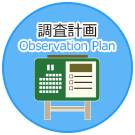Seed production of bivalves utilizing endocrine control and production management of scallop aquaculture
Period and Interval2017/04/01 - 2018/03/31
Field survey: every month, Observation buoy: every time, laboratory experiment: any time
Research Area
Ogatsu bay, Onagawa bay, Others (laboratory experiment)
Research Point Table
| Point | | Name | Observation buoy |
|---|
| Coordinates | 38.498756,141.498494 |
|---|
|
|---|
CategoryField survey, Mooring system(Observation buoy), Others(laboratory experiment)
OverviewTo identify the molecules that regulate sex, sexual maturation, spawning, settlement and metamorphosis and reveal these functions in farmed bivalve species enable us to develop the technique of artificial seedling production by artificial manipulations of sex, maturation, spawning and settlement in such bivalves. Gonadotropin releasing hormone (GnRH) has been suggested to be useful for manipulation of sex and maturation in some bivalves. In this year, we plan to establish a cell culture system that available for response assessment of GnRH receptor in scallops. Conclusively, we aim to design the general GnRH peptide available for several bivalves to compare responses to the GnRH peptide in these species.
We aim to survey a total amount of scallop production and the numbers of facility for scallop farming in Ogatsu Bay for calculation in order to calculate productivity of scallop and compare with a pre-quake period. Additionally, the environmental capacity for scallop culture in Ogatsu Bay was evaluated by growth condition and food availability based on a primary production (i.e., monitoring of chlorophyll a concentration). We plan to evaluate an availability of remote sensing data for estimation of chlorophyll a concentration in waters of Ogatsu Bay comparing with regular line observation and stationary measurement by observation buoy.
